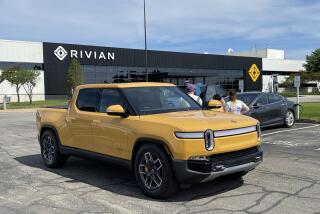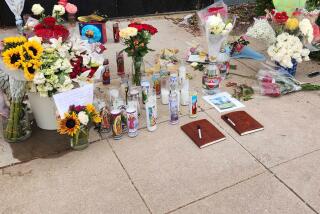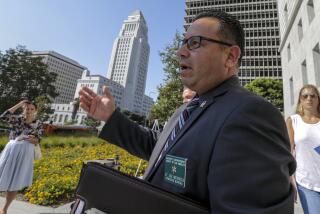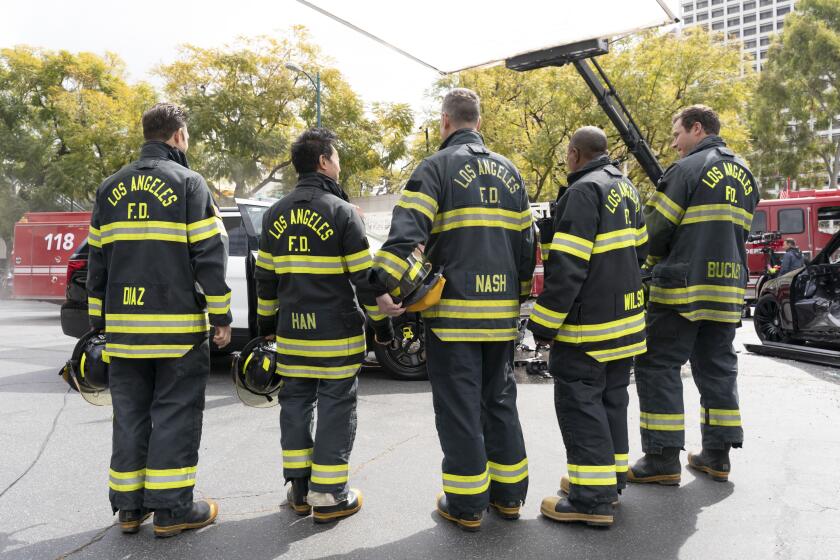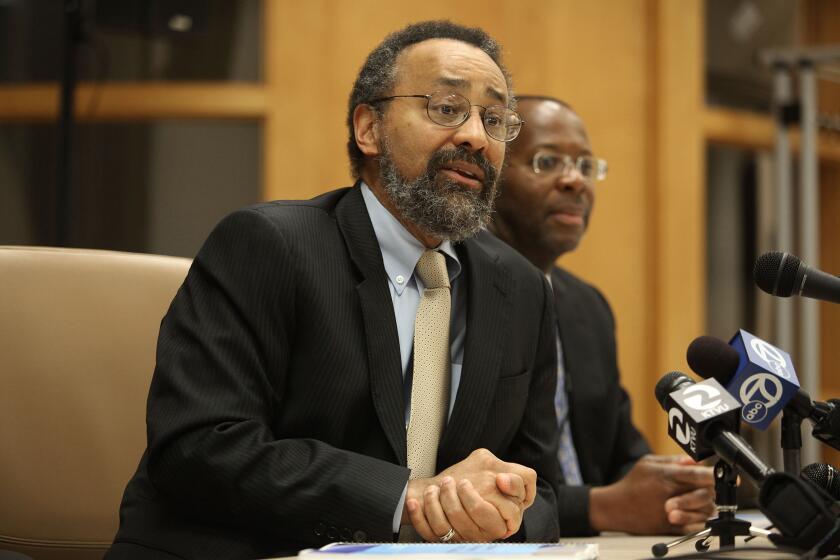Making a Point : Neighbors Use Police Radar to Speed Compliance With Law
For several years, Rick Ellis and his neighbors have watched as drivers turned their street into a drag strip.
“I’ve chased people on my bicycle trying to get them to slow down,” said Ellis, a father of two who lives in Glen Mar.
Most of the drivers ignoring the 25-mph speed limit are parents rushing to pick up their children from Little League games at nearby Wardlow Park or from the Boys and Girls Club across the street, neighbor Greg Johnson said.
“Mostly,” he said, “it’s women in vans full of children.”
A week ago, residents found a way to fight back. Using a new city program, they borrowed a radar speed gun from the Police Department. Now, every morning and evening rush hour, Ellis can be seen pointing the radar at speeding cars while Johnson records the license numbers.
“We’ve had people point at us and give us the finger,” Ellis said. “One lady jumped out of her car and told us that we were harassing her.”
But in the last week, he said, a noticeable change has occurred: People are beginning to slow.
The idea was borrowed from the city of Riverside, which last year began equipping residents with radar speed guns. Officials there say they believe they were first in the state to try it, and that Huntington Beach just became the second.
“We get about 25 citizen complaints a month from people who have a problem with speeding vehicles in their neighborhoods,” Huntington Beach police spokesman Dan Johnson said. “We can’t respond to all of them because we just don’t have the time or personnel. So we thought if we could train the callers in the use of radar, that would be a good thing.”
The department will provide any responsible individual or group making the request with a radar speed gun, batteries, traffic log and instruction, free of charge. Dan Johnson said the department has three radar guns to lend, each worth several thousand dollars.
Police also will send warning letters to every speeder clocked by a radar gun. Police officers may make personal visits to the homes of repeat offenders, he said. And if problems persist, Dan Johnson said, the department will send officers to a location to make their own observations and, if necessary, issue citations.
“This is not a citation program or a speed trap,” he said. “It is simply a program to make people aware that speeding in a residential area is dangerous. We are looking for voluntary compliance.”
Some of that seems to be happening in Glen Mar, the only neighborhood so far with its own mobile speed gun.
Carol Ludlow of Huntington Beach, who picks her children up from the Boys and Girls Club every day, expressed support for the program, although she had been clocked at 41 mph the day before.
“If this were my neighborhood,” she said, “I’d be doing the same thing. Where I live, when I see people speeding I always tell them to slow down.”
Beth Doucette, also of Huntington Beach, admitted that the visible presence of the radar gun has affected her driving.
“To be honest,” she said, “I used to drive 30 to 35; now I make it a point to stay at 25.”
Still, she said, “It’s hard not to take it personally. It’s annoying day after day; when I pull in here, I feel like they’re attacking all of us.”
Evelyn Neal of Fountain Valley said she also finds the radar gun extremely intrusive.
“We feel like criminals,” she said. “We’re just working parents coming to pick up our kids.”
And some parents were bothered enough by the electronic surveillance to ask a club administrator to summon police on a recent late afternoon.
“I called them because of parents’ complaints that they were being harassed,” said Debra Phillips, the club’s administrative assistant.
Responding to the call, Officer Art Preece, after determining that no harassment had taken place, stood by for a while as the two sides calmly discussed their differences.
“There was probably some miscommunication,” he said. “We just came to keep the peace.”
Greg Johnson and Ellis, meanwhile, say they plan to keep it up until the neighborhood’s last speeder has slowed.
“It’s just common sense,” Greg Johnson said. “What’s going to happen is that there will be a child killed and then something will be done. What we want to do is prevent that first fatality.”
More to Read
Start your day right
Sign up for Essential California for news, features and recommendations from the L.A. Times and beyond in your inbox six days a week.
You may occasionally receive promotional content from the Los Angeles Times.
